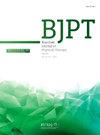高强度间歇训练与中强度连续训练对冠心病患者运动能力和健康相关生活质量的影响:一项最新的系统综述和荟萃分析
IF 3.1
3区 医学
Q1 ORTHOPEDICS
引用次数: 0
摘要
背景:尽管运动对冠状动脉疾病患者的积极作用众所周知,但最佳运动训练方案仍在讨论中。目的:我们进行了一项系统回顾和荟萃分析,研究高强度间歇训练(HIIT)与中强度连续训练(MICT)对冠状动脉疾病患者运动能力和健康相关生活质量(HRQoL)的影响。方法:我们检索了MEDLINE/PubMed、Cochrane Library EMBASE和PEDro数据库,寻找评估HIIT与MICT效果的随机对照试验。计算平均差值和95%置信区间(CI)。结果:27项研究,1454例患者符合入选标准。1259例患者的24项研究评估了峰值耗氧量(VO2peak)作为结果。HIIT组vo2峰值升高(MD = 2.11 mL/kg/min;95% ci: 1.14, 3.07;I2 = 78%;N = 1259)与MICT组比较。6项研究共纳入316例患者,评估HRQoL作为结果。HIIT组和MICT组在HRQoL的身体、情感和社会领域没有发现差异。在10项等热量运动训练研究的亚组分析中,HIIT组和MICT组显示出相似的vo2峰值(MD = 0.72 mL/kg/min;95% ci:0.03, 1.48;I2 = 44%;N = 453)。结论:我们的荟萃分析显示,低质量的证据表明,HIIT训练比MICT更有效地改善冠状动脉疾病患者的VO2peak,而不是HRQoL。然而,当分析仅限于等热量方案时,没有发现HIIT和MICT之间vo2峰值的差异。本文章由计算机程序翻译,如有差异,请以英文原文为准。
High-intensity interval training versus moderate-intensity continuous training on exercise capacity and health-related quality of life in patients with coronary artery disease: An updated systematic review and meta-analysis
Background
Despite the well-known positive effects of exercise in patients with coronary artery disease, the best exercise training protocol is still under discussion.
Objective
We performed a systematic review and a meta-analysis to investigate the effects of high-intensity interval training (HIIT) versus moderate-intensity continuous training (MICT) on exercise capacity and health-related quality of life (HRQoL) in patients with coronary artery disease.
Methods
We searched MEDLINE/PubMed, the Cochrane Library EMBASE, and the PEDro database for randomized controlled trials that evaluated the effects of HIIT versus MICT. Mean difference and 95 % confidence intervals (CI) were calculated.
Results
27 studies, with 1454 patients, met the eligibility criteria. Twenty-four studies with 1259 patients assessed peak oxygen consumption (VO2peak) as an outcome. The HIIT group showed an increase of VO2peak (MD = 2.11 mL/kg/min; 95 % CI: 1.14, 3.07; I2 = 78 %; N = 1259) compared with the MICT group. Six studies with 316 patients assessed HRQoL as outcome. No differences in physical, emotional, and social domains of HRQoL were found between the HIIT and MICT groups. In the subgroup analysis of 10 studies with isocaloric exercise training, the HIIT and MICT groups showed similar VO2peak (MD = 0.72 mL/kg/min; 95 % CI:0.03, 1.48; I2 = 44 %; N = 453).
Conclusions
Our meta-analysis showed low-quality evidence that HIIT training was more effective than MICT for improving VO2peak but not HRQoL in patients with coronary artery disease. However, when the analysis was limited to isocaloric protocols no difference between HIIT and MICT was found for VO2peak.
求助全文
通过发布文献求助,成功后即可免费获取论文全文。
去求助
来源期刊
CiteScore
6.10
自引率
8.80%
发文量
53
审稿时长
74 days
期刊介绍:
The Brazilian Journal of Physical Therapy (BJPT) is the official publication of the Brazilian Society of Physical Therapy Research and Graduate Studies (ABRAPG-Ft). It publishes original research articles on topics related to the areas of physical therapy and rehabilitation sciences, including clinical, basic or applied studies on the assessment, prevention, and treatment of movement disorders.

 求助内容:
求助内容: 应助结果提醒方式:
应助结果提醒方式:


